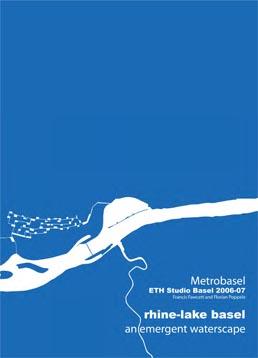Stausee - Rhine-Lake Basel - an emergent waterscape

Students: Francis Fawcett, Florian Poppele
Location: Group work in Basel
Date: January, 2007
Type: Research project, student work, rhine
The Rhine has been the decisive factor shaping, as an element of nature and landscape, the city and its metropolitan region from earliest days. Nevertheless, it was not only the stream, that influenced the man-made environment of the urban fabric. For century after century, always with the newest technology available, man has tried to change and modify the course and shape of the river and its adjacent elements of nature, to match his functional needs and his aesthetical requirements. One can view the history of the Basel region as a man-nature and nature-man forming dialectic. Those interventions were often very comprehensive, even radical, and decisive for future metropolitan development. Nature was never understood as static, unquestionable, and god-given, but, on the contrary, as a dimension to be formed and shaped.
What is the relationship between nature or landscape and energy? What is the potential that can be extracted from this relationship? At a time when the annual floods of rivers in Europe are reaching ever higher levels, while at the same time summer droughts are leading to dry riverbeds, bringing transport and trade to a halt, can a n intervention on a grand scale give answers to some of those problems that will become ever more pressing in the years to come? Can we combine this functional and vital requirements with changing concepts of resources and recreation that are influencing our daily lives?
Does the fauna and flora need precisely this urban environment and the urban proximity, to develop in a protective way? Does a radical transformation of the landscape require the urban relationship? Can architecture or urbanism make suggestions in the field of renewable energy that are innovative? Can MetroBasel have an energy-bill of zero?
How can we develop a large scale intervention, such as a new dam and lake as ‚Lake Raurika‘ connecting two of the major green areas of Metrobasel Jura and the black forest? What changes on an administrative and operational level are necessary to achieve this? What is its effect on the ecosystem throughout the seasons and the years? How will it influence habits of recreation? Can it free up potential in other areas (Schrebergärten, etc.) which can then be used as ‚pawns‘ in the game of urban transaction?
Download the Book PDF

